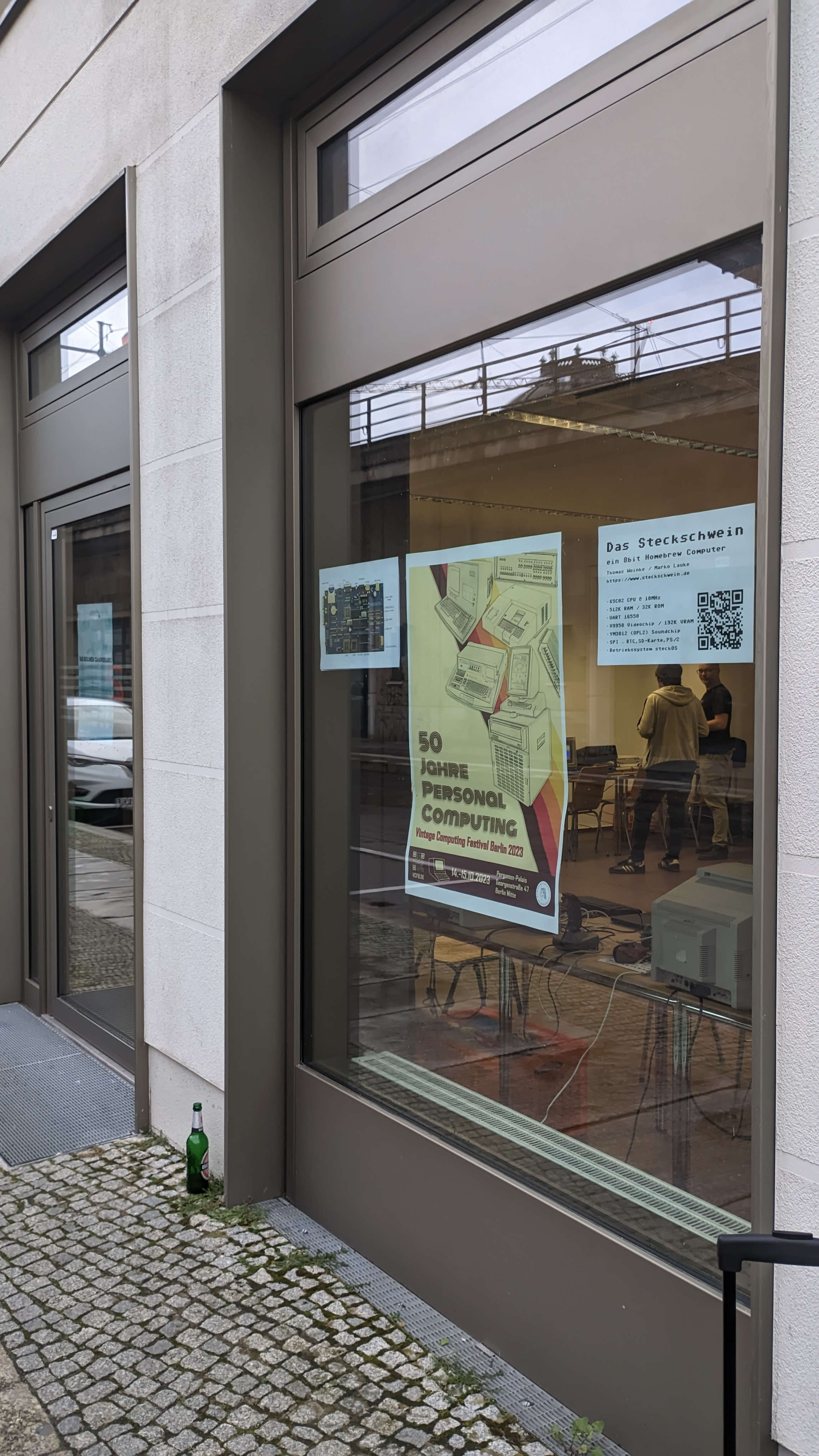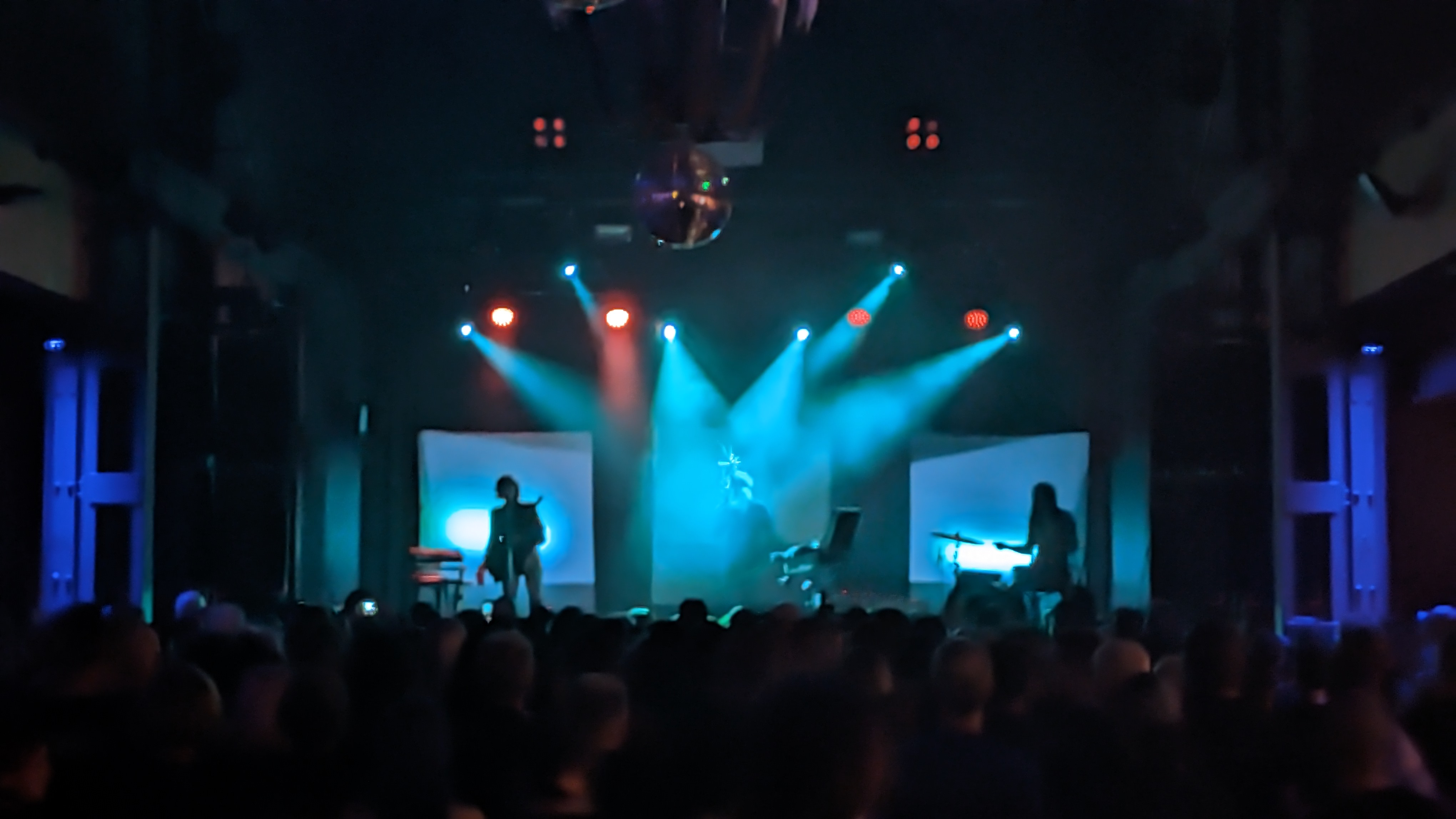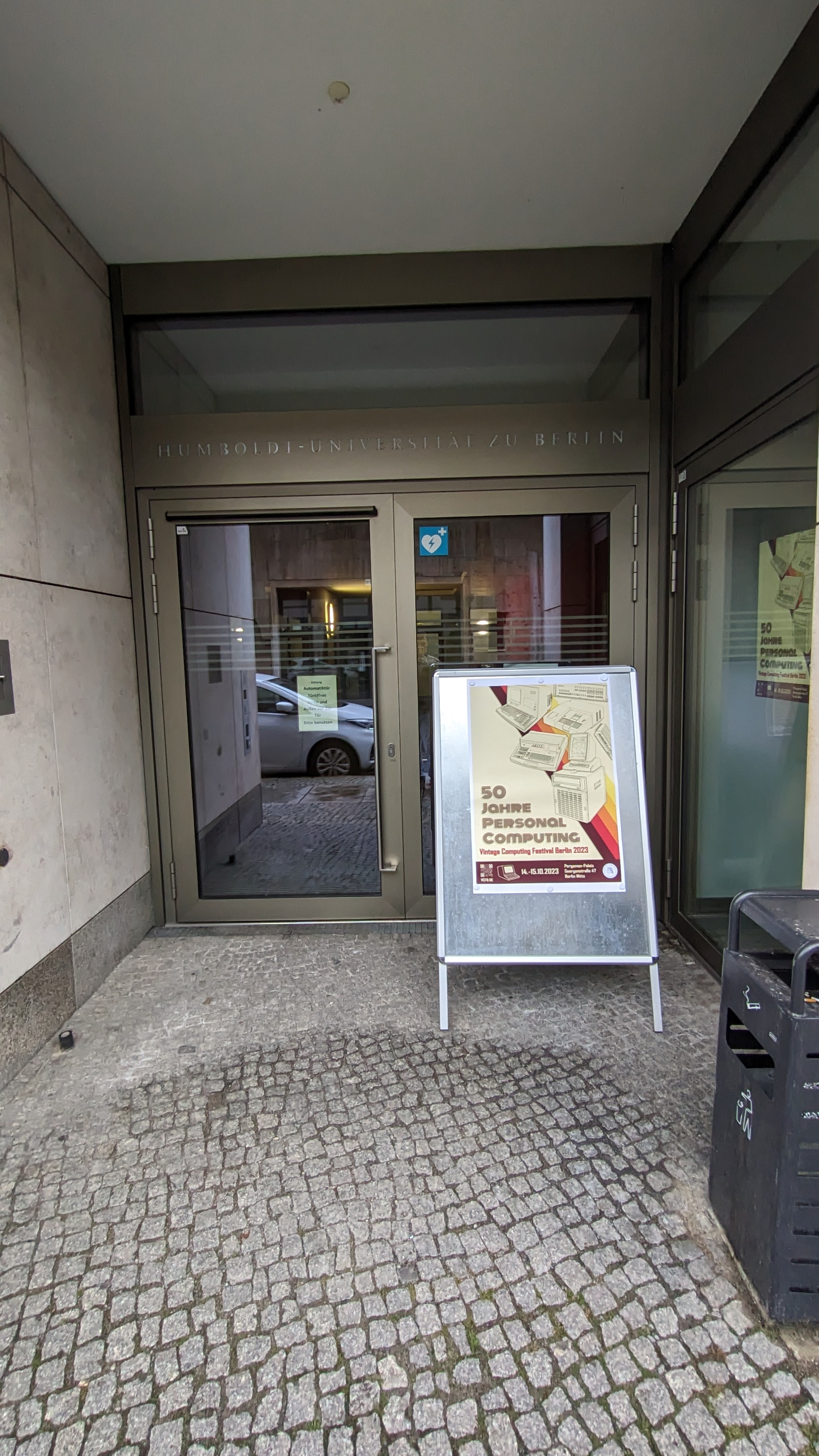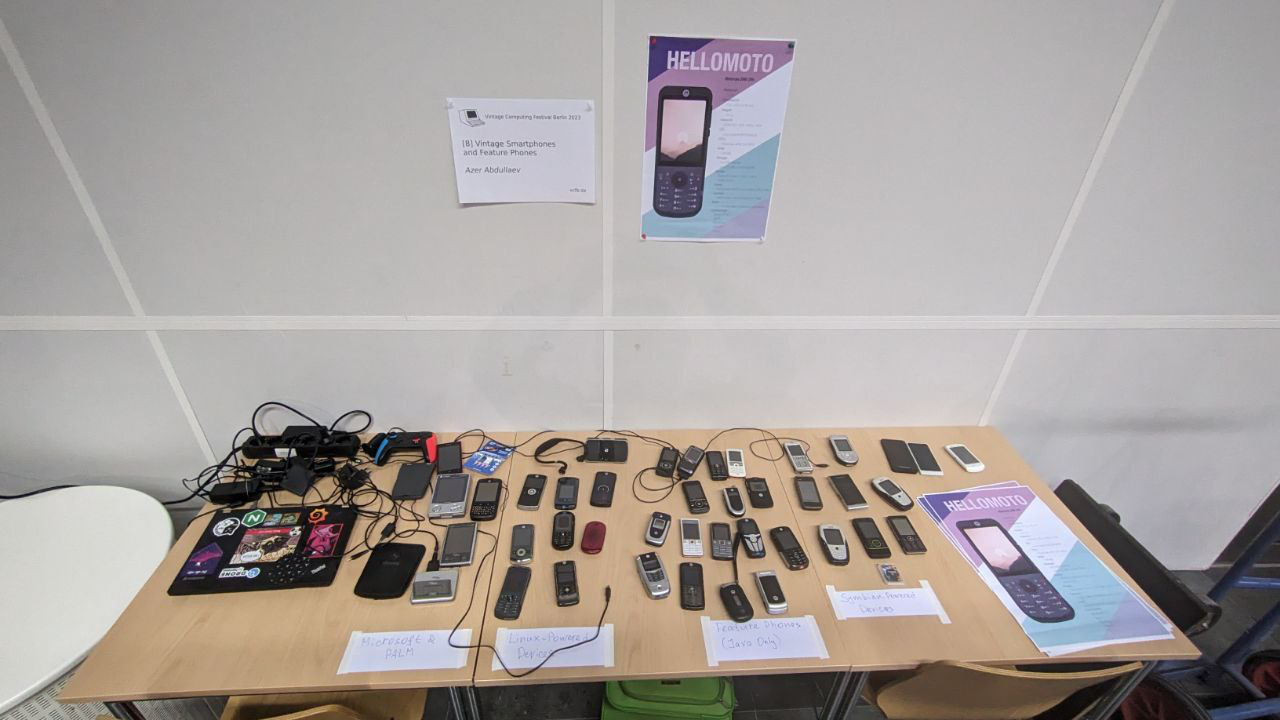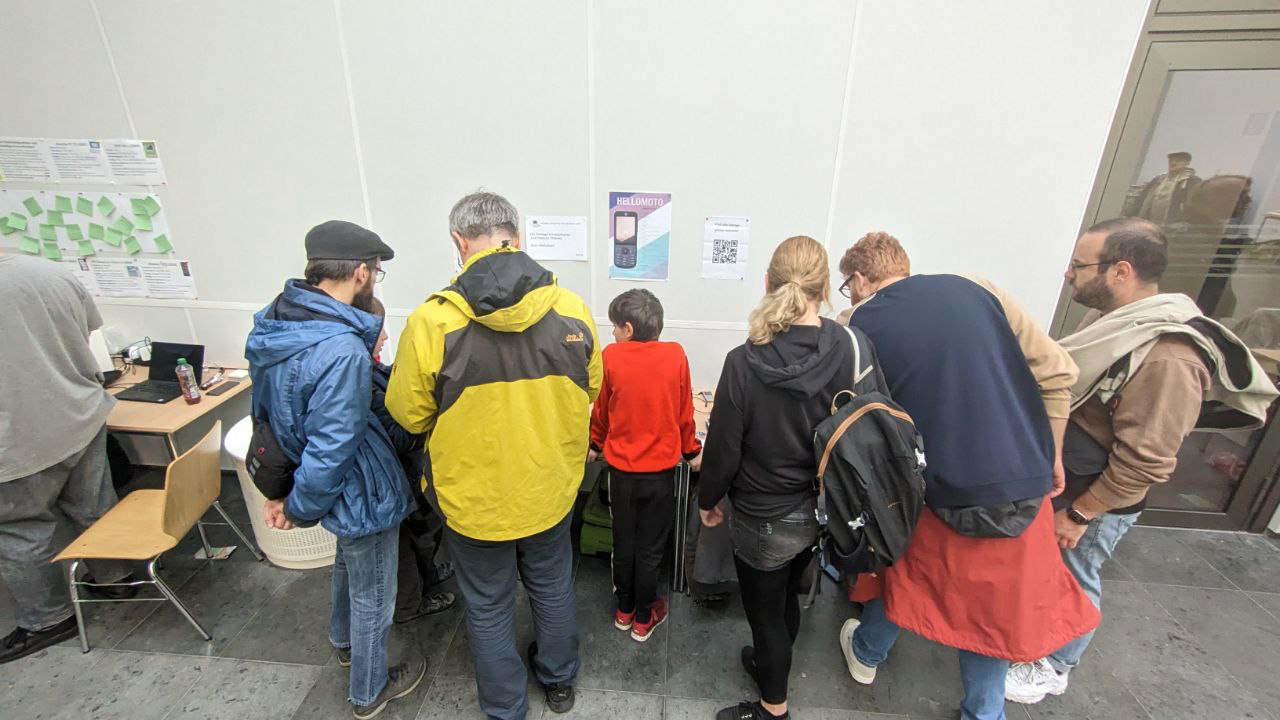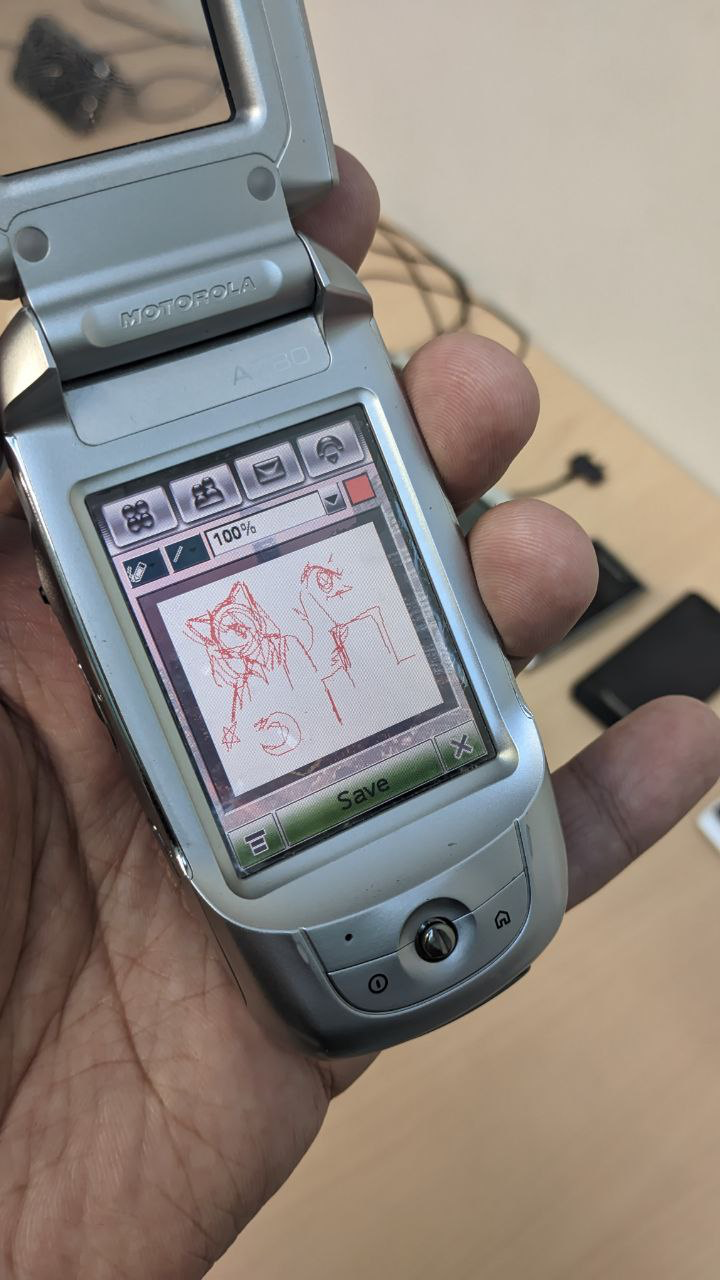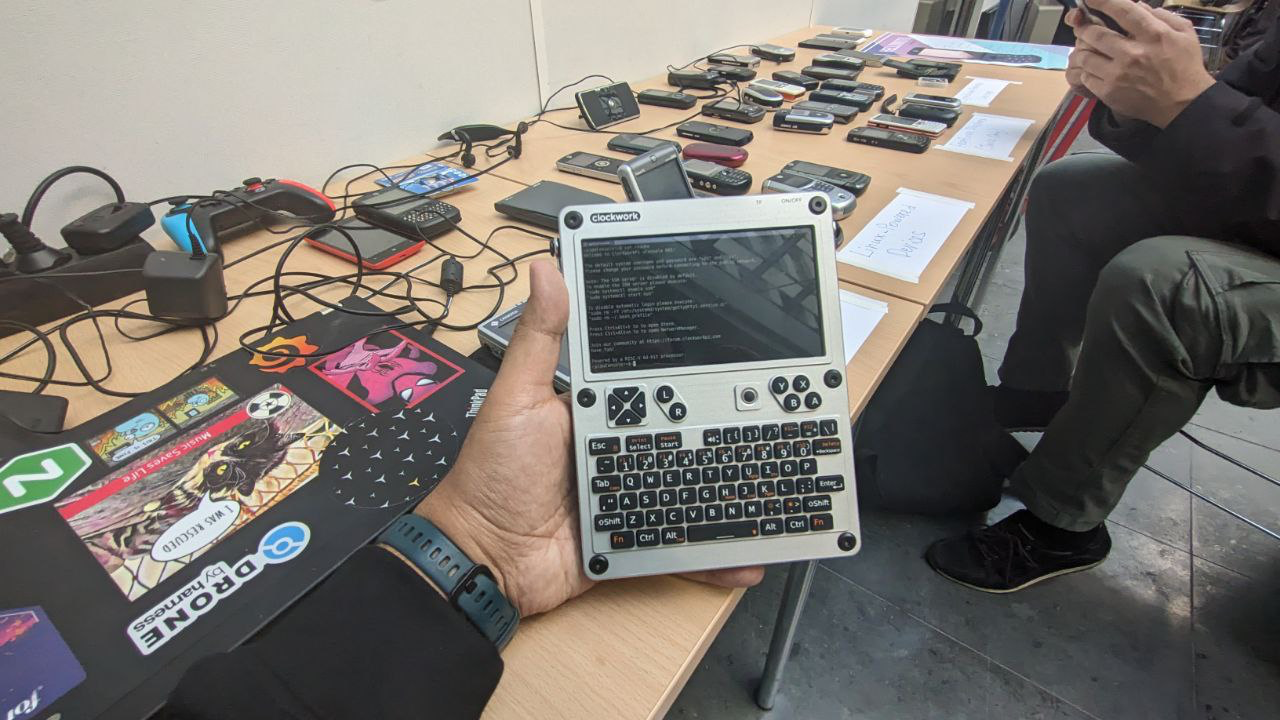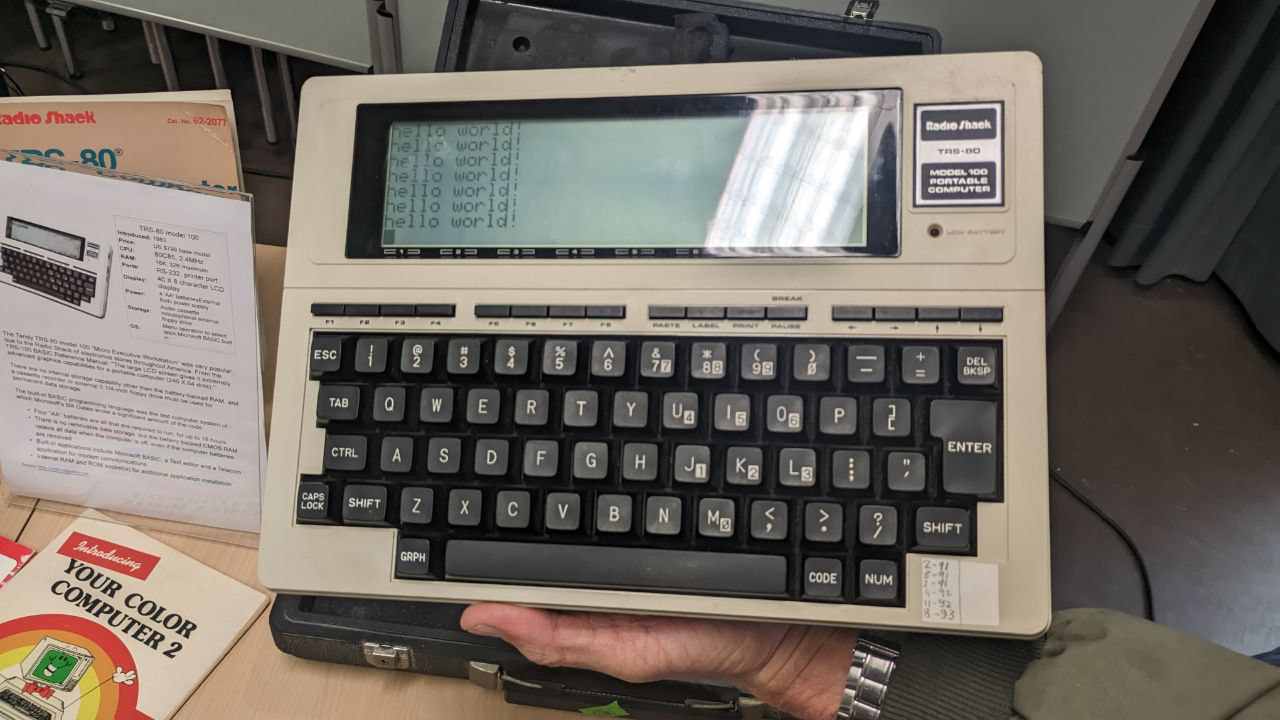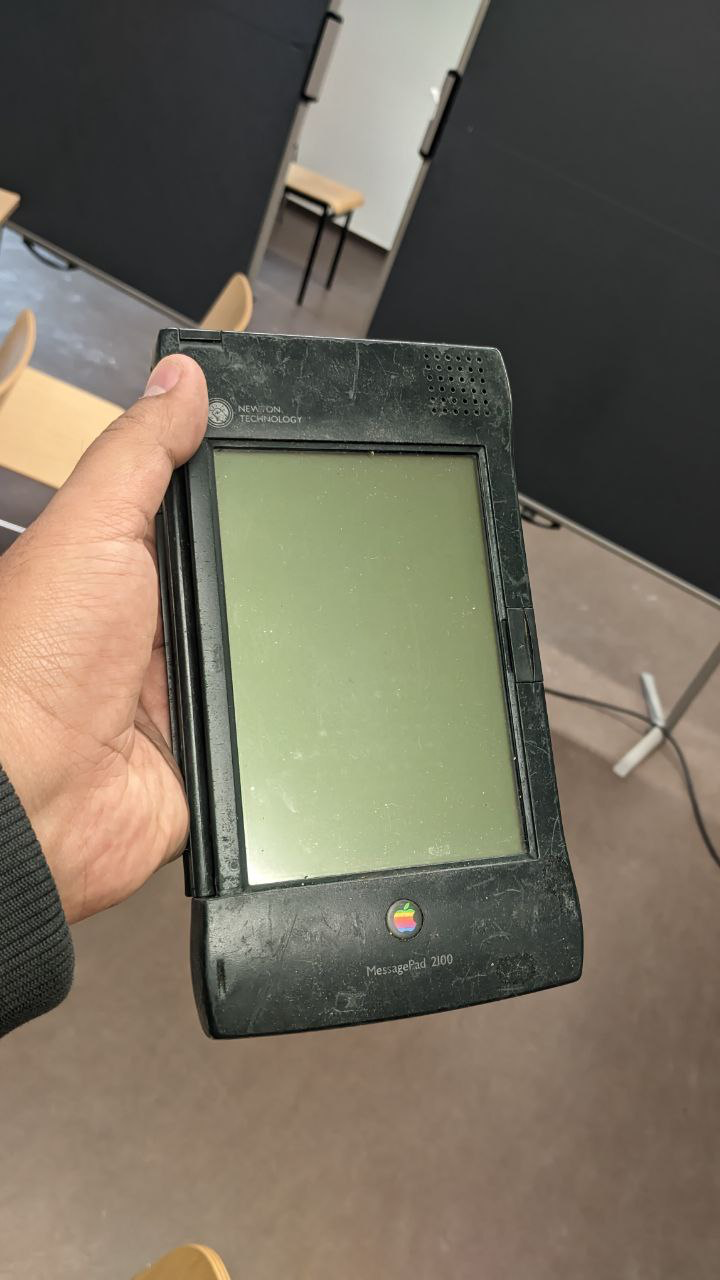Vintage Computing Festival Berlin 2023, the report
I have already shared in many different places that my mind has drifted a little towards the topic of collecting electronic junk, that is, outdated mobile phones. Recently, my peculiar hobby has reached a completely different level: I applied to participate in the Berlin Vintage Computing Festival. I was very nervous, thinking that I wouldn't be able to handle it and would blurt out some weird nonsense, that the theme of my exhibit, amidst a multitude of truly old computers like the BK or ZX Spectrum, would be entirely out of place. To my great relief, I was wrong.
Beginning
As it usually goes, any exhibition begins with submitting an application to participate in it. I wasn't particularly hopeful, and even two weeks before the opening, no one had contacted me, not a soul. Well, that's not entirely true. Someone did. Just not the organizers, but Evgeny Bolshakov, my friend who brings Soviet BK computers to the exhibition. He was pleased with my declared participation, and I was glad that we would meet in the cool nerdy crowd. And indeed, soon my name appeared on the official website's list of participants. Well, now I really had to get prepared! Initially, I had requested three tables and one power strip. It should be enough for thirty-something mobile devices.
Preps
As is usual with me, I first create a nearly flawless plan of action, and then execute it strictly in a random order, that is, as circumstances dictate. The situation had an extra edge because on the evening just before the festival, I had a planned visit to an IAMX concert. In Leipzig. I literally hopped on an intercity train straight from my workplace and ventured into the industrial outskirt of the most boring city in Germany, which at that moment felt magical to me.
The Täubchenthal club radiated the vibes of a true German club, and the cyber-industrial-cabaret atmosphere permeated every nook and cranny. Chris Corner himself felt right at home.
Time to go home. I had just five hours of sleep left, but that didn't bother me in the least. The concert had charged me up well, and I was ready for anything. My suitcase had been packed well in advance, in the basement, a week ago. It held over 30 units of various devices, ranging from ancient Palm Inc. PDAs to nearly modern smartphones. I say "nearly" because Android 4.x already looked quite ancient. Of course, all this required chargers, as well as a laptop to extract data via USB or Bluetooth. The job was done, it was time to go. It was 8 in the morning.
The venue for the festival was kindly provided by Humboldt University. We had at our disposal three enormous, thematically divided halls, a snack room, and restroom facilities. An improvised reception area was set up right in the corridor. After a brief overview of the festival rules (signed, of course), I was given a personalized badge. It was time to unpack!
Exhibition
I sorted all the phones and pocket computers into sets based on their functions and supported operating systems. Of course, the center stage was taken by my favorite Motorola mobile phones running on MontaVista Linux. I invested a lot of time in modding them, which, in turn, enhanced my scripting skills and basic command-line interaction.
A substantial group was also formed by regular "dumbphones," or feature phones. These were basic mobile phones that supported a maximum of J2ME applications. But they all had something in common: I had a strong emotional connection with these phones back in the day, which still exists. In my collection, there is even an almost unused Sony Ericsson W800i, the first of all under the Walkman brand! It was quite a hype back in the day.
A slightly smaller group is made up of smartphones based on Symbian. Here I have a wide variety because the operating system itself was divided into many different flavors. To name the few: Series60 V2, Series60 V3, Series60 V5, UIQ V3. And it's not only Nokia that could and did create Symbian-based devices; in my collection, there are also devices from Sony Ericsson and Motorola, who, by the way, were the founders of this consortium. For a complete set, I'm missing UIQ V2, Series80, maybe even Series90 (very rarely and very expensive), and for the sweetest part, a pocket assistant from Psion, running on EPOC, the ancient predecessor of Symbian.
For dessert, I had the coolest toys of their time, namely PDAs. Among them, I had the Casio Cassiopeia based on Windows CE 3.x, Fujitsu-Siemens Pocket LOOX based on Windows Mobile 2005, and the Palm III. Oh, how I drooled over such devices back in the day! Take, for example, the fact that they all had many reassignable buttons, a vast array of available software, and most often, a very high-quality audio system, complete with a standard headphone jack. Maximum convenience!
Palm, of course, stood out. Firstly, it ran on two AAA batteries, which was unusual but quite normal for the nineties. Secondly, the Palm OS operating system was primarily single-tasking, meaning that when you returned to the home screen, the previous application was simply unloaded from RAM. And thirdly, the primary input method was Graffiti, a proprietary system of hieroglyphs that, with some skill, allowed for reasonably fast text input. This same system was later licensed for use in Windows Mobile, although it wasn't the primary input method there.
Finally, I have devices that fell victim to the well-established duopoly of Apple and Google. These are the Blackberry Z10, running on QNX, and the Nokia Lumia 520 based on Windows Phone 8. Both platforms met similar fates: first, in a moment of desperation, RIM and Microsoft introduced support for Android apps, and eventually abandoned these platforms as unprofitable ventures.
Now, with the entire exhibit laid out, all that's left is to await the most important part—the exhibition visitors!
Visitors
And finally, the very reason this whole festival was coming together! Well, of course, hanging out with fellow nerds is always cool, but without our guests, the visitors, it wouldn't be an exhibition but more like a LAN party. We had a lot of them, way more than I could have ever imagined.
The stream just didn't stop. I could barely find time to sit down or have a cup of tea. And it was great because the visitors showed real, lively interest! Not many remember the original Spectrums and BK in action, but almost everyone remembers mobile phones. Even the little kids, but they found it interesting too. You could play Minesweeper, Solitaire, pop bubbles, and doodle in the program on a Pocket PC. Even on my very peculiar Motorola A780, which was essentially an upside-down flip phone with a touch screen, teenagers left me drawings.
Among other interesting attractions, I offered guests extensive stories and explanations about nearly every phone in the collection. There was also one fascinating attraction: two phones featured a good camera and a xenon flash, specifically the Motorola ZINE ZN5 and the Sony Ericsson Satio U1i. I took photos with them right at the exhibition and sent them to guests via email or through Telegram. Everyone had a great time!
It was delightful to see some good friends among my guests. We spent several hours by my booth engaged in conversations and even had the opportunity to explore the newly assembled Clockwork Pi, which was designed as a likeness to a very intriguing device that made an appearance at the festival.
Other remarkable exhibits
Yes, here it is, the RadioShack TRS 80 Model 100. Beloved by journalists as a digital typewriter, it also functions as a computer with one of the versions of BASIC. Yes, it's a portable computer, and the ability to connect it to a printer made it even more useful.
And, of course, I couldn't overlook the Apple Newton, perhaps one of the biggest failures ever in the pocketable computing industry. The only possible method for users to input text into this beast was handwriting recognition on the screen, which worked incredibly poorly! Nevertheless, the device became a part of history, maybe not the brightest page, but certainly a recognizable one.
Final thoughts
Without a doubt, I will submit an application to participate in VCFB 2024! Such an event cannot be missed. Nowhere else will I find so many enthusiastic, kind, intelligent, and bright individuals interested in computing technology and its history, as at a festival like this.
By the next year, I plan to slightly expand my collection and present a broader range of palmtop computers: small folding devices with comfortable text-entry-sized keyboards. In this weight class, you'll find such gems as the Psion Series 5, Nokia 9300, HP Jornada 720, Sharp Zaurus SL C-1000, and even the Atari Portfolio! Without these devices, it's challenging to showcase and explain the history and the path to miniaturizing a full-fledged office into your pocket.
Until we meet again! Stay tuned for announcements.
Sun, 22 Oct 2023 22:31:42 +0200
RSS // Telegram // Статистика
